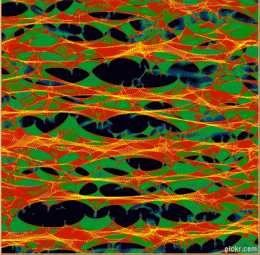The shadows of the cosmos

Black holes are probably not afraid of their shadows. They'd swallow them if they could.
But it's still surprising to think that these cosmic garbage cans, and all other matter, can actually cast patterns of darkness on space -- shadows.
The shadows are one of the most striking consequences of Albert Einstein’s theory of general relativity, says Duke mathematical physicist Arlie Petters, who has a detailed article on cosmic shadows in the December 2010 issue of Notices of the American Mathematical Society.
General relativity mathematically describes how an object's gravity can bend light, distorting it into different patterns, like rings and shadows, in space.
The best way to picture the cosmic shadows is with a flashlight and two screens. One of the screens sits in front of the other along the path of the light and it holds the cosmos -- stars, planets, black holes, gas and dark matter.
When the flashlight's rays hit this first screen, the cosmic materials' gravitational forces bend the light.
The rays that are not captured on that front screen and pass through, then travel on to create cosmic shadows on the back screen.
“Even more surprising is that the shadow patterns are not haphazard. They obey mathematical laws,” Petters says.
Provided by Duke University





















